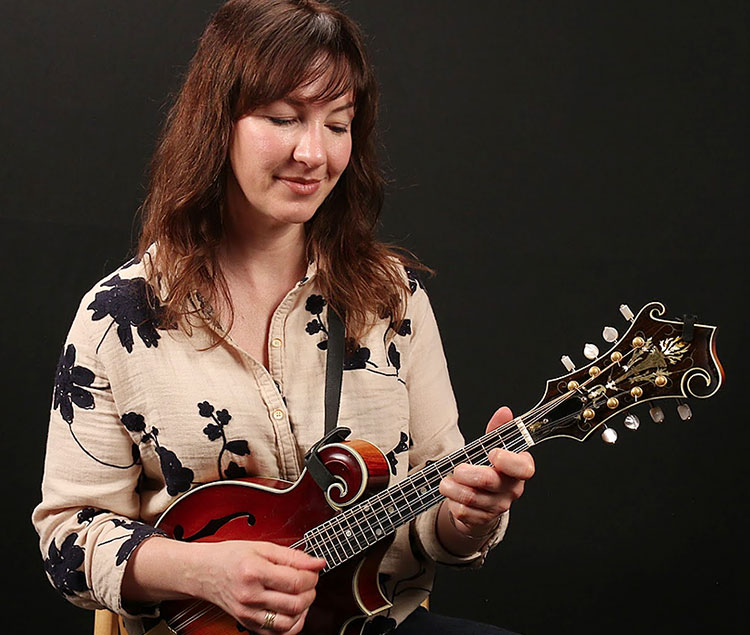In Part 2 of the session, Sharon walks you through the basic melody of “Old Joe Clark” and isolates the four basic rhythms contained in the melody. Then she shows you how to use these rhythms to create variations on the melody.

In this workshop, Sharon uses common bluegrass and old-time tunes like “Old Joe Clark,” “Whiskey Before Breakfast,” “June Apple,” “Angeline the Baker,” and more to demonstrate her method for teaching students how to embellish and vary melodies as a way to begin to improvise.
Sharon talks about what she will be doing in her Melodic Embellishment workshop, and gives you PDFs and MP3s of the tunes she will be using to demonstrate her method of embellishing and varying melodies
Sharon kicks off her workshop by introducing four sustain techniques (single string, two strings, drone, and separating two strings) and three rhythmic techniques (quarter notes, eighth notes, and shuffle bow) and showing you how to use them to create variations on the melody of “Old Joe Clark.”
Sharon shows you how to use the sustain and rhythmic embellishment techniques you learned in the last lesson on “Angeline the Baker” and shows you how to move the melody into different octaves and add drones and double stops.
Sharon shows you the melody to both parts of “Soldier’s Joy” in a higher octave, and the melody to the B part in a lower octave. She also shows you a Bill Monroe solo in which Monroe simplifies the melody so he can play it at a fast tempo.
Sharon shows you some rhythmic and melodic variations on “Soldier’s Joy” and gives you ideas on incorporating them into your own versions of “Soldier’s Joy.” She starts by showing you how to simplify the basic melody of “Soldier’s Joy” like Bill Monroe did, and how the simplified melody allows you to drive the melody by accenting beats two and four or vary your rhythmic accents in different ways. She also talks about varying the melody of “Soldier’s Joy’ with double stops and chord tones.
Sharon shows you a variety of variations on “June Apple,” including a variation that subtracts melody notes and keeps the eighth notes driving, a technique called the “Monroe Jump,” the melody in the lower octave, and variations that include sequences and other embellishments. She also gives advice on how to practice the material you’re learning in this class and prioritizing your practice sessions.
Sharon introduces you to the concept of sequences, and shows you variations on “Whiskey Before Breakfast,” including some that use sequences.
In this session, Sharon shows you some variations for “Clinch Mountain Backstep.” She starts by playing through the melody and adding some of the variation techniques you’ve learned, like playing the melody with drones, shuffle bow rhythm, the two-string technique, and the separating two strings technique. Sharon also talks about adding double stops to the melody and then introduces a new technique that she calls “back and forths.”
In this session, Sharon shows you variations for “Gold Rush” and introduces two new concepts: contrasts in melody range and repeated figures.